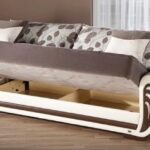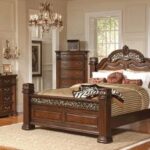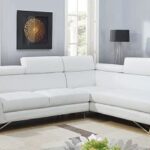You’re Shopping for Sheets All Wrong—Experts Reveal the Truth About Thread-Count
You’re Shopping for Sheets All Wrong
You’re Shopping for Sheets All Wrong—Experts Reveal the Truth About Thread-Count

Humans are creatures of habit. From the way we brush our teeth to the methods we use to make our bed each morning, chances are, we’ve been doing things the same way for a long time. But what if I said the way you purchase sheets—and more specifically what sheets you buy—is all wrong?
Although there’s been buzz for years around “thread count” as the sheet-measuring metric… and despite the fact that you’ve probably been following all of the recommendations around sheets and best-buying practices, the trends (and truths) have shifted.1
Here’s what you need to know about sheets and thread count, according to experts.
First, What Is Thread Count?
In order to understand the value or lack of value, rather, one has to understand what thread count is in the first place. Thread count is the number of vertical (“warp”) and horizontal (“weft”) threads that exist within a square inch of woven fabric. In everyday terms, we’re talking about how tightly woven a piece of fabric is, and typically—the tighter the weave, the smoother and more luxurious it feels.
There is only a certain amount of threads that can fit within a single square inch. And many manufacturers are able to work around by using a factor called ply. Jacob Andsager, founder of The Modern Dane, explains. “Ply refers to how many yarns are wrapped together to make a single thread. The most durable yarn is a single-ply, which consists of one continuous thread, whereas two-ply is typically made by spinning two thinner threads together to form the yarn.”
By using two-ply, manufacturers are able to double the thread count by, unfortunately, lowering the quality.
“An 800-thread count sheet woven from two-ply, thinner threads may well be of poorer quality than regular single-ply 400 thread count sheets,” Andsager says. “The reality, however, is that 400 is the maximum thread count that makes a discernible difference to the quality, and you’d be right to be suspicious of anything beyond that.”
So, in short, thread count matters… but only to a certain extent.
Karin Sun, the founder of Crane & Canopy, elaborates further. “It’s true there are three things that impact the quality of your sheets: the type of fabric, thread count, and weave,” she says. “However, it’s not necessarily true that the higher the thread count, the better the sheet.”
If you have a 900-thread count of fabric that is low quality, well, you’ll still have a poor quality sheet. And in recent years, Sun explains, thread count has become a rather meaningless marketing claim rather than a measure of true value.
In her opinion, consumers should focus on alternative measures for sheet quality.
So, What Should Shoppers Actually Look For?
When it comes to making a sheet purchase, there are a few questions to ask out the gate: What is the fabric? Where was the fabric produced? What is the weave? Is the fabric breathable? Does the sheet use organic or natural materials?
Breathability
Torun Hannam, the founder of The Bamboo Shop, shares that the breathability of bedding is everything, especially for hot sleepers. “The idea that higher thread count is better quality is a myth that’s completely false,” she says. “Breathability comes down to what the sheets are made from. Natural textiles have better breathability than synthetic materials (like polyester), even if they are the same thread count.”
Hannam encourages shoppers to focus on natural materials as they will help to keep you cool and comfortable. Cotton, she shares, has the most options in terms of color, style, and price. However, if you prefer a smooth and softer feel to your sheets, she encourages bamboo because this fabric is gentle as well as more eco-friendly than other sheet fabrics.2
Weave
Another important consideration for consumers is the weave. Hannam shares that there are three main types of weave: percale, sateen, and twill.
“Percale uses a one-thread-over, one-thread-under pattern, which creates a crisp, lightweight fabric with a matte finish. Sateen weave is one-thread-under and four-thread-over, producing a silky feel and lustrous sheen. [And] twill weave has diagonal parallel ribs, like denim, producing a durable material but not as smooth as percale or sateen.”
The Best Percale Sheets of 2021
The best recommendation for sheets, Hannam says, is to figure out what type of feel you prefer and start from there.
What Sheet Materials Are Out There?
If tackling the thread-count question sounds overwhelming, your first step is to understand different fabrics and figure out your preferences and ranking of the following: quality, comfort, breathability, stiffness, softness, and/or eco-friendly properties.
Here are a few of the most common or trendiest sheet fabrics:
Cotton
This is a staple fabric due to breathability and longevity.3 “For cotton sheets,” Karin Sun says, “The longer the staple of cotton, the higher the quality. You should look for bedding made from premium cotton, like extra-long or long-staple cotton, because it is luxurious, soft, and it will last for years to come.”
The 8 Best Cotton Sheets of 2021
Egyptian Cotton
Another staple sheet material is Egyptian cotton. But is that fabric truly better or higher quality? Sun weighs in. “These days, Egyptian cotton just means cotton that originates from Egypt, not the type of extra-long staple cotton Egypt is originally known for,” she says.
“Today, fine extra-long-staple or long-staple cotton can be grown anywhere around the world.”
The 6 Best Egyptian Cotton Sheets of 2021
Eucalyptus Fibers
A newer trend is organic eucalyptus fibers which are arguably more breathable due to their antibacterial and moisture-wicking properties.4 Eucalypso, for example, is a company that creates certified organic, 100% natural eucalyptus fiber sheets. This could be another fabric alternative—one that, although boasting a 600-thread count, focuses less on those numbers and more on breathability and sustainability properties.
Celliant Yarn
Another newer option for sheets is celliant, mineral-infused yarn that actually converts your body heat to infrared energy while you sleep. Sound too technical? Here’s the rundown: these sheets work with your body’s natural heat to increase blood flow and circulation.5 If you’re looking for a new-and-trending sheet option—and are tired of worrying about thread count—these Sleepletics Celliant Sheets could be one to consider.
So, How Do You Choose Better Sheets?
The ‘best’ sheets will depend on the buyer. For example, if a silky feel is desired, cotton sateen may be a good fit. Crisp texture? Sun shares that percale bedding might be the best fit. Her top suggestion: to stay away from polyester and polyester blends.
Another option is to avoid the issue of thread count altogether and try a different fabric.
Pro Tip About Linen Sheets
Andsager recommends linen. “With linen bedding, you don’t have to worry about [thread count] as [it]… is not a factor in determining the quality of linen and, in fact, is typically not even listed,” he says. “Linen is one of the strongest plant-based fibers used in textile and up to three times more durable than cotton. As such, it is naturally a thicker yarn and, with that, has a looser weave.”
The 7 Best Linen Sheets of 2021
Andsager also shares that if you are looking to purchase linen sheets, however, that you avoid any bedding that is flax-produced without certifications, as flax creates a sort of ‘glue’ within the fabric that lessens the quality. “Look for GOTS, OEKO-TEX, and European Flax certified linen bedding,” he advises.
In essence, no matter which sheet fabric you prefer or purchase—you have to weigh out the pros and cons. One thing is for certain, though, the thread count is truly a metric of the past.




